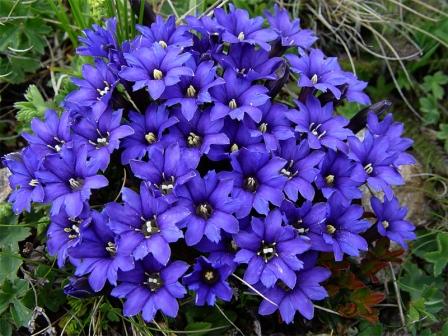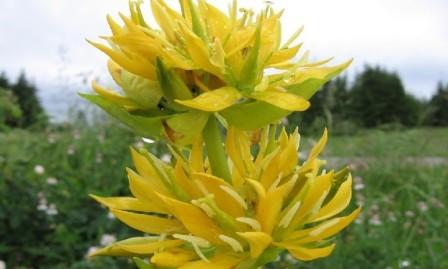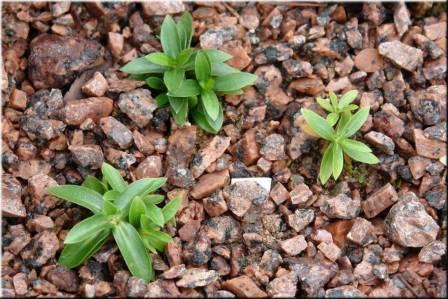 Gentian has long been loved by landscape designers for its gentle beauty, and although it is not so easy to get this mountain beauty on its site, many are interested in gentian, planting and care in the open ground, photo. What are we going to deal with now.
Gentian has long been loved by landscape designers for its gentle beauty, and although it is not so easy to get this mountain beauty on its site, many are interested in gentian, planting and care in the open ground, photo. What are we going to deal with now.
The gentian came to us from the mountain heights, where she likes to grow, climbing to a height of up to 5 thousand meters. Therefore, the mountain beauty is not so easy to take root in our flat conditions. She needs special soil and conditions for germination, but having gotten used to it, she can lodge a mountain guest in her garden, combining it with familiar home plants and decorating borders.
There are many species of gentians - from tiny to 6-7 cm plant species to yellow gentian, which can grow up to 1.2 meters. The large-leaved variety of the plant is very beautiful, medium in size, with beautiful leaves of purple or green colors. All species bloom until the fall, only some begin to please bloom in early summer, others towards the middle or the end of summer, but bloom until the frost overcomes them.
We recommend to see: phlox perennial, planting and care, photo.
Daurian gentian
This variety can grow up to 40 cm; it begins to bloom in mid-June with dark blue flowers, which are pretty large. She is good at cutting, and she is loved as a decoration and bordering flower beds.
Gentian stemless
They call her correctly Kokha, she is very tiny, is a perennial, grows no more than 10 cm, and pleases with delicate bright flowers from blue to pink. Very popular for decorating rocky beds.
Yellow gentian

The highest of all plant species, has thick, highly branched roots, large flowers and a multi-seeded box of elongated shape. It is not as beautiful as other varieties of gentian, but it is very healing and is in demand in medicine.
See also: flowers for the garden, blooming all summer, photo titled.
Landing and care
Although it is not a simple matter to grow gentian in your garden, it is possible, and subject to the necessary conditions, to plant a mountain plant in your home. To sprout seeds, they just need to be scattered on the ground and spilled, not sprinkled with earth. Under a stream of water, the seeds themselves will plunge into the ground. They will not germinate soon, the process can take up to 3 months, and the temperature for germination of seeds needs around 10 degrees Celsius. That is, it is necessary to plant with the calculation of this temperature so that seedlings do not die. Select the soil like this: 2 parts of sand and one part of peat, this is an ideal option for gentian.

It is easier to propagate the gentian by dividing the bush, they do this in the fall, carefully taking out the plant along with a lump of earth, trying not to damage the delicate roots. Gentian blooms until the first snows. She closes her flowers at night, with the rising of the sun they open again, delighting the gardener's eye with delicate colors. All types of gentian love moisture and drainage, this must be considered when choosing a place for them in the garden.
When replacing the gentian, it is necessary to loosen the soil well, add, if the soil is not loose, gravel, bone meal, while digging a hole three times more than the plant, and not too deep into the soil. Leave a distance of 20-30 cm between the bushes, sprinkling sand between the bushes.
Experienced gardeners argue that the best way to plant gentian is in the winter. Cuttings are also carried out in the winter, choosing bushes with good strong roots and numerous shoots.
See also: lilies faded - what to do next.
